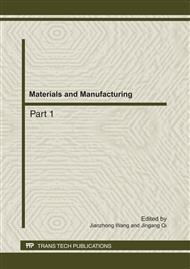p.452
p.456
p.460
p.466
p.470
p.475
p.480
p.484
p.489
Injection Molding Preparation and Film Formation Performance of Powders-Modified Polyethylene Biomass Carrier for Aerobic Process
Abstract:
A simple injection molding process was proposed for manufacturing polyethylene (PE) biofilm carrier composited with various powder additives including hydroxyapatite (HAP), starch, bagasse, activated carbon(AC) and magnetic powder(MP) as slow-released nutrients in wastewater biological treatment. The powders were also responsible for improving the hydrophilicity and biomass affinity of the carrier. Pre-attachment between powders and PE particle may achieve great improvement in flow ability of particle-powder mixture during injection molding process. The slow release rate of nutrients (mainly water-soluble starch) from the modified carrier to wastewater can be controlled by the amount of bagasse and activated carbon supplemented in the carrier. The contact angle of a water droplet on the polyethylene surface decreased from 80° to 59° after modification, and the period of biofilm formation on the modified carrier with acclimated sludge reduced from 7 days (on PE carrier without additives) to 4 days. The amount of attached biomass on the modified carrier was also found about twice as that on the common PE carrier. The strength performance test demonstrated the capability of long-term operation for the modified carrier in practical application.
Info:
Periodical:
Pages:
470-474
Citation:
Online since:
July 2011
Authors:
Price:
Сopyright:
© 2011 Trans Tech Publications Ltd. All Rights Reserved
Share:
Citation:


